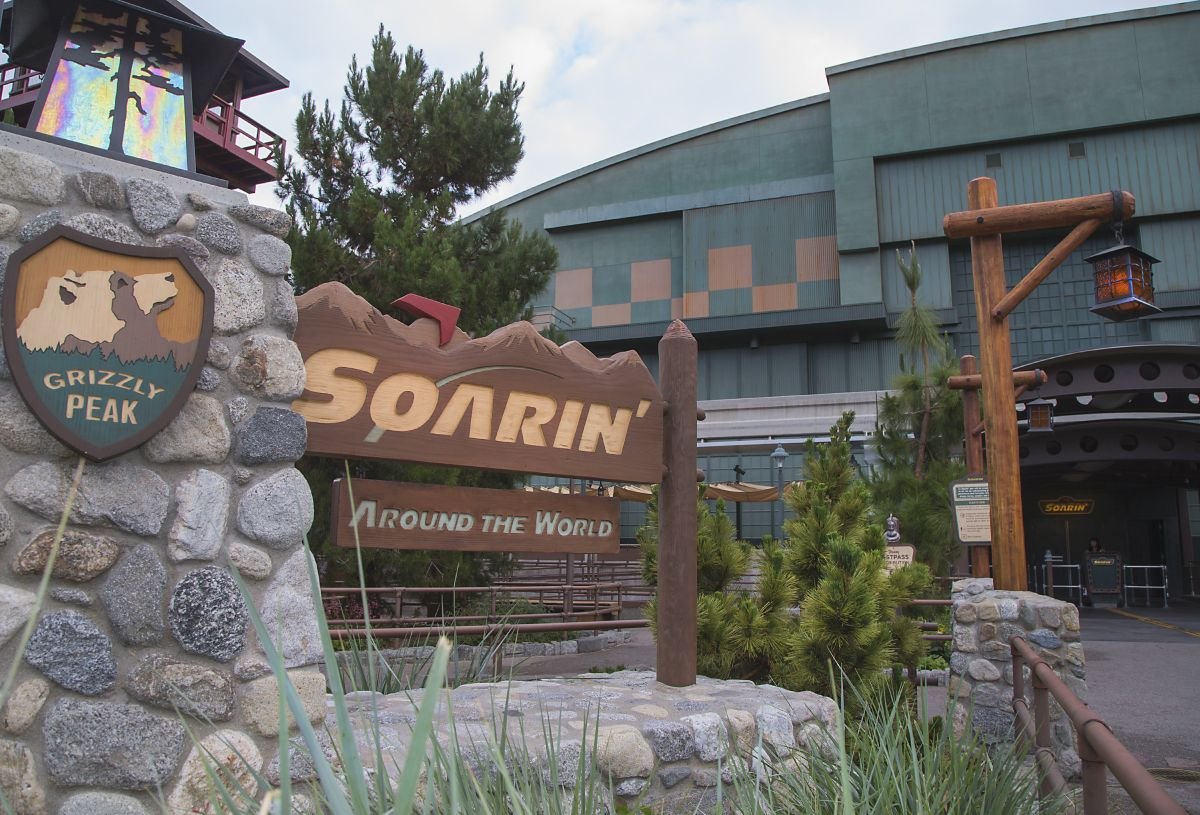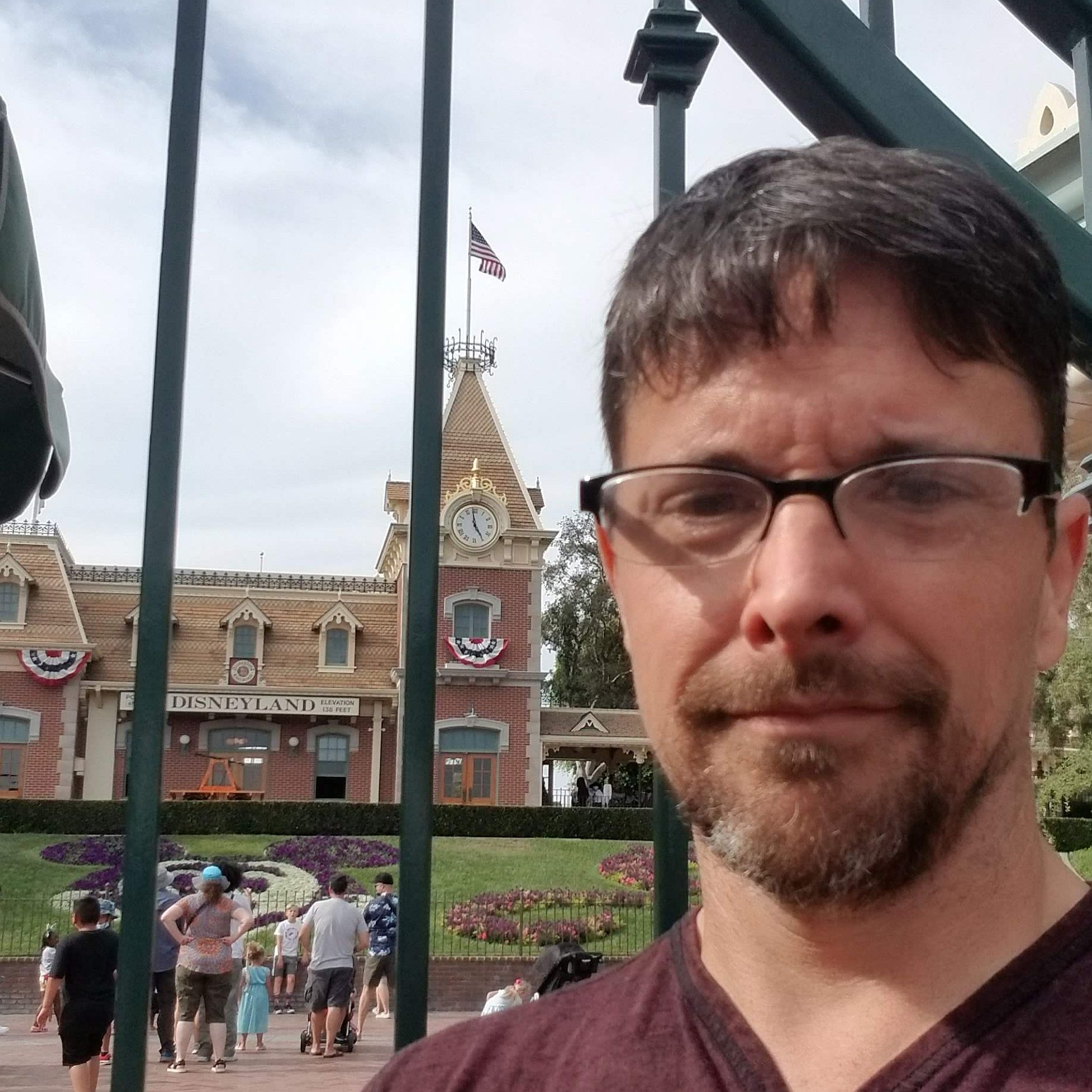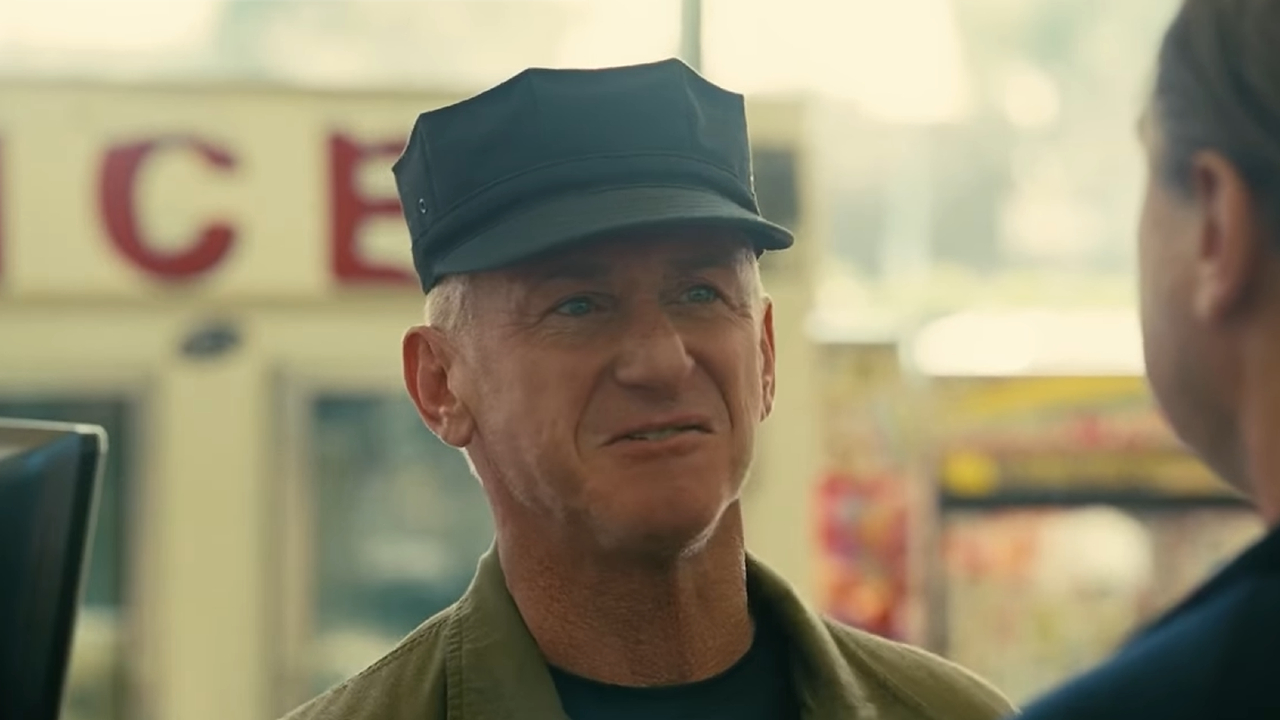A History Of Changes At Disneyland's California Adventure As It Starts Its 20th Year

Since 1955, Disneyland has been The Happiest Place on Earth, and for millions of visitors every year, it certainly becomes exactly that. While Walt Disney World may have become the crown jewel of Disney's theme park empire, and Shanghai Disneyland might be the newest and shiniest example of what Walt Disney Imagineering is capable of, there's a certain special magic about the original location that never really goes way.
Except, Disneyland is so much more than one park. It's called the Disneyland Resort for a reason, because in addition to the flagship Disneyland, you'll find three beautiful hotels and shopping district that is every bit as charming as the Disneyland name implies, and then, there's the whole other theme park.
It seems almost insane to believe there's such a thing as an overlooked Disney theme park, but Disney California Adventure, the park that was built over Disneyland's original parking lot, really is overlooked. You can't exactly miss it when you're standing outside the gates of Disneyland, but Disney California Adventure (DCA to its friends) usually sees a fraction of the attendance that Disneyland does. And it used to see even fewer people every year.
February 8 marks the 19th birthday of this unique park, so as it begins it's 20th year of life, it's a good time to look back on the long road that Disney California Adventure has had to become the place it is today.
It Was Almost A West Coast Epcot
When Michael Eisner took over the Walt Disney Company in the mid-1980s, one of his major initiatives was to revitalize the theme park business. This eventually led to major renovations and new attractions at Disneyland, and new parks at Walt Disney World. Once Disneyland itself was in a better position, plans turned to adding parks on the west coast as well. In 1991, Disney announced the plans for WestCOT, a park that was supposed to be a west coast version of Epcot, the permanent world's fair park that had been added to Walt Disney World in the early 1980s.
Unfortunately, another of Eisner's big ideas, EuroDisney (later Disneyland Paris), was not the initial success that the company had expected. This led to a lack of money to spend on WestCOT, and the idea was eventually shelved. However, the broader concept, of adding a second park in California, was no less important to Disney. And so the company tried to find a way to build a park that would be less expensive that the WestCOT idea.
Part of the great success of Walt Disney World was that with multiple theme parks, guests had less of a reason to ever leave property, meaning any and all money spent was money in Disney's pocket. The company wanted to recreate that idea in the west. Disney knew that many people who came to California on vacation only visited Disneyland as part of a larger trip to the Golden State, and so the idea of building a park that would combine all the great things about California was born. Why take the time and effort to visit the Napa wine country and Hollywood, and Fisherman's Wharf when they were all right in one place for you? Just stay and experience the Disney version.
Your Daily Blend of Entertainment News
Yes, the idea of a DIsney theme park that celebrated California, located in actual California, wasn't without its detractors but eventually the park moved forward. Construction began in 1998 and on February 8, 2001, Disney's California Adventure opened to the public.
While the park's concept was scoffed at by many, and maybe not without some justification, Disney's California Adventure provided exactly what it claimed to, the Disney version of many popular California locales. The front gate of the park and the first area, Sunshine Plaza, were deigned to look like a California postcard brought to life. There was Hollywood land, which celebrated the movie business, Pacific Wharf resembled Cannery Row, but also included elements of the Napa wine country. Grizzly Peak looked like a California National Park, complete with redwoods. Paradise Pier looked like the Santa Monica pier, complete with midway style games and traditional carnival rides.

Disney's California Adventure Struggled From The Beginning
While you'd think a brand new Disney theme park would be an instant hit, Disney's California Adventure had a hard time catching on. There were a number of criticisms of the park. Many complained it was lacking in attractions for young children. The park also lacked thrilling experiences for the teen and young adult audience with only the California Screamin' roller coaster and Grizzly River Run water attraction available. The lack of rides was one thing, but the rides that were there impressed few. The traditional carnival attractions on Paradise Pier were just off the shelf rides that could be found all over the world with no modifications, none of the Disney magic. Few of the attractions really felt like they were created by the same minds that made some of Disneyland's greatest experiences.
One attraction, Superstar Limo, consisted of a collection of non-animatronic celebrity caricatures that were the stuff of nightmares. The ride was supposed to put guests in the position of a celebrity evading the paparazzi, but when Princess Diana died doing just that while the park was under construction, the ride was retooled. Still, it had to be done on the cheap, and the ride showed it. It's viewed by some to be literally the worst attraction Disney have ever created. The ride would close only 11 months after the park opened.
The Walt Disney Company was still struggling due to the difficulties of EuroDisney and it showed in Disney's California Adventure. In 2002 A Bug's Land would open, addressing the park's lack of attractions for younger kids. DCA would also get its own version of the popular Walt Disney World attraction, Twilight Zone Tower of Terror in order to add another e-ticket thrill ride, but these would be only a band aid on a much larger problem.
When Roy E. Disney would resign from the Disney Board of Directors in 2003 and lead a campaign to remove Michael Eisner and CEO of the Walt Disney Company, a lack of investment in the theme park business was one of the major arguments Roy made. It was clear to everybody, inside and out, that Disney's California Adventure wasn't working and that the attempt to build a new park without spending the necessary money was the wrong way to go.

Disney California Adventure's Major Overhaul
In the same way that Michael Eisner made the under served theme parks a priority when he took over as the CEO in the 1980s, when Bob Iger took the role from Eisner in 2005, he also made the theme parks a major focus. In 2007 a multi-year expansion and redesign of Disney's California Adventure was announced that would cost a reported $1.1 billion, almost double what the park's initial construction is believed to have cost.
The centerpiece of the redesign was a new entrance. The picture postcard idea was completely removed and replaced with Buena Vista Street, an entrance plaza idea similar in design to Main Street U.S.A. at Disneyland, a street ending in a hub that led off to the rest of the park. Buena Vista Street was designed to turn back the clock to Hollywood in the 1920s, the era when Walt Disney moved there from Missouri and started the Disney Bros. Studio. At the far end of the street stood Carthay Circle, a restaurant designed to look like the classic Hollywood movie palace where Snow White and the Seven Dwarfs had made its World Premiere.
In addition, an entirely new land, Cars Land, was built, which allowed guests to visit Radiator Springs, and included the new E-ticket attraction, Radiator Springs Racers. Toy Story Midway Mania had been already been added to Paradise Pier, and the rest of the pier was given a redesign so that the traditional carnival rides had some more Disney themeing included. A Little Mermaid dark ride was added and a Monsters Inc dark ride replaced Superstar Limo, it works remarkably well even considering they reused every bit of Superstar Limo that they could.
Disney California Adventure was rededicated in 2012, and that year the park saw a record high of 7 million visitors. It even got a name change, as Disney's California Adventure became simply Disney California Adventure. But the changes didn't stop there. The Twilight Zone Tower of Terror became Guardians of the Galaxy - Mission: Breakout in 2017, and Paradise Pier was given a retheme and became Pixar Pier in 2018.

The Future Of Disney California Adventure
As with all Disney theme parks, DCA will never be finished. There will always be new ideas, and old attractions closing to make room for new ones. Having said that, following the major overhaul, the park is at least now at a place where it feels complete. At least it will when the park's newest land opens. In September of 2018 A Bug's Land closed to make way for the upcoming Avengers Campus, the new Marvel themed land is set to include Spider-Man and Doctor Strange themed attractions when it opens later this year, which will be followed by an Avengers themed E-ticket as part of a planned Phase 2.
After that, there's nothing specific known about what's next for Disney California Adventure, but considering everything the park has been through up to this point, I'm sure it will be exciting if nothing else. After all of the work that's been done, so much of DCA is comparatively young for a Disney park, that replacing any of it seems premature, but leaving everything alone would go against everything that Disney Parks and Walt Disney Imagineering strives to do.
In 2018, Disney California Adventure saw just short of 10 million visitors, making it the 12th most visited theme park in the world. However, by Disney standards, the park still sees a relatively small number of guests. DCA was ahead of Disneyland Paris by less than 20,000 total guests, though both were well ahead of the much smaller Hong Kong Disneyland.
Of course, when the theme park across the plaza is the second most visited theme park in the world, it's maybe not so surprising that fewer people give it a shot. DCA will always be "the second park" and that's ok. Second parks have a charm all their own.
I for one love Disney California Adventure. Main Street U.S.A. is a throw back to a time that never really existed in America history, but Buena Vista Street somehow feels more real. You certianly feel like you've taken a step back in time as you walk down that street, which is particularly effective if you're visiting during Dapper Day.
The Carthay Circle Restaurant is the best place to eat dinner inside either of the parks from a menu standpoint I love the Blue Bayou's atmosphere, inside Pirates of the Caribbean at Disneyland, but I find the food options lacking. And if I'm not in the mood for a meal, it's also got the coolest bar, that makes you feel like you might see a classic movie star at the next table.
Cars Land looks amazing when the neon lights up at night. And while I think I preferred California Screamin to the Pixar themed Incredicoaster, it's still a great roller coaster, whatever you call it.
If I'm in the mood to go on my favorite rides, then I'll go to Disneyland, but when I simply want to enjoy the ambiance of a park and let the artificial reality of it all overtake me, the romanticized version of California is not a bad place to spend a day. It's a lot like that other second park that DCA was once supposed to be. Epcot may not be the most exciting park with the coolest rides. But its got a unique style and atmosphere that simply can't be matched. Visiting the Disneyland Resort and not spending some time just soaking up Disney California Adventure is a missed opportunity.
Besides, if you want to grab an outdoor table on a nice spring day, open a bottle of wine, and literally watch the parade go by, you just can't do that at Disneyland.

CinemaBlend’s resident theme park junkie and amateur Disney historian, Dirk began writing for CinemaBlend as a freelancer in 2015 before joining the site full-time in 2018. He has previously held positions as a Staff Writer and Games Editor, but has more recently transformed his true passion into his job as the head of the site's Theme Park section. He has previously done freelance work for various gaming and technology sites. Prior to starting his second career as a writer he worked for 12 years in sales for various companies within the consumer electronics industry. He has a degree in political science from the University of California, Davis. Is an armchair Imagineer, Epcot Stan, Future Club 33 Member.
